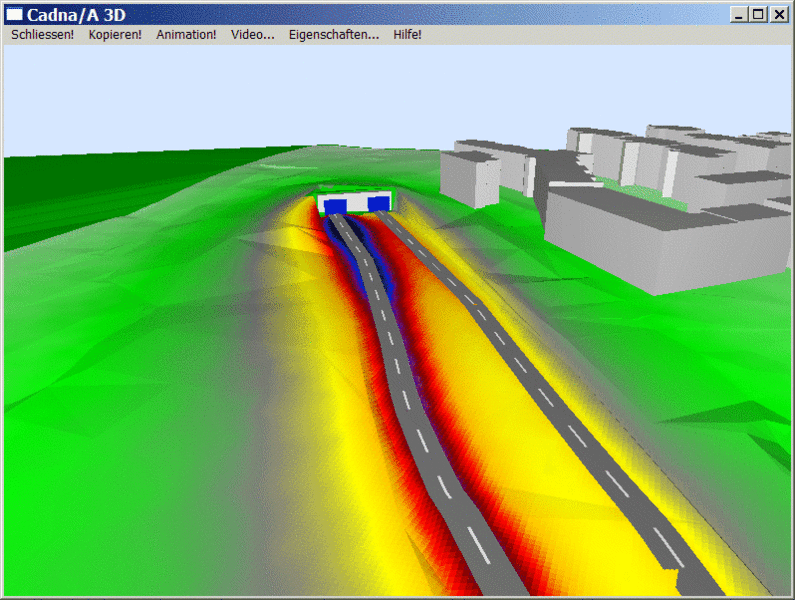
Using noise mapping to predict the noise reduction effect of an acoustic barrier.

We believe that noise mapping is very useful but should be used only where real-world measurements are not possible, for example when predicting what height of barrier would be necessary to reduce a noise source to a certain level or to predict what impact a potential site development would create. There may be significant reflected sound paths around objects with surface absorption and ground effects reducing certain frequencies that are easily misrepresented.įor these reasons we always attempt to minimise our reliance on noise mapping and the levels calculated. Sometimes complex building structures are reduced to simple boxes. Another example is using a line source to model a moving point source which assumes the source level is consistent throughout the entire movement. An example of this is when a source is modelled as omnidirectional, losing any directivity that is inherent. how inaccurate these calculations might be, will increase for each instance of the model simplifying a more complex situation.
#CADNAA SOFTWARE#
Whilst the science of acoustics and how sound travels through the atmosphere is fairly well understood, it is important to remember that the calculations provided by noise mapping software are estimations that rely on accurate inputs. How accurate and reliable is noise mapping? By taking traffic information or spot measurements and combining them with aerial views it is possible to map out the effects of an existing road on a hypothetical development, or predict the screening required to bring levels below the requirements given for minimising health effects. Using formulae for predicting the creation and propagation of sound that are provided in various standards and guidance and combining this with illustrative tools and visual aids it is possible to calculate and map out decibel levels, providing useful information that can help acoustic professionals.įrom modelling sound sources using real-world measured levels that are converted into sound power levels, or using sound power levels provided by manufacturers that have been taken in laboratory environments, it's possible to model the propagation of the noise generated by these objects in various scenarios.

#CADNAA WINDOWS#
CadnaA is developed in C/C++ and communicates perfectly with other Windows applications like word processors, spreadsheet calculators, CAD software and GIS-databases.ĬadnaA includes a multi-lingual user interface and is successfully applied in more than 60 countries all over the world.Sound modelling has become an increasingly popular tool in acoustics, often for assessing the impact of potential developments or for predicting the effects of noise mitigation methods.

With its technical capabilities and its ease of use CadnaA represents state-of-the-art technology. With more than 30 implemented standards and guidelines, powerful calculation algorithms, extensive tools for object handling, outstanding 3D visualization and the very user-friendly interface CadnaA is the perfect software to handle national and international noise calculation and noise mapping projects of any size.ĬadnaA with extension Option APL also allows calculation, assessment and presentation of air pollutant distribution. Whether your objective is to study the noise immission of an industrial plant, of a mart including a parking lot, of a new road or railway scheme or even of entire towns and urbanized areas: CadnaA is designed to handle all these tasks.

CadnaA (Computer Aided Noise Abatement) is the leading software for calculation, presentation, assessment and prediction of environmental noise.


 0 kommentar(er)
0 kommentar(er)
